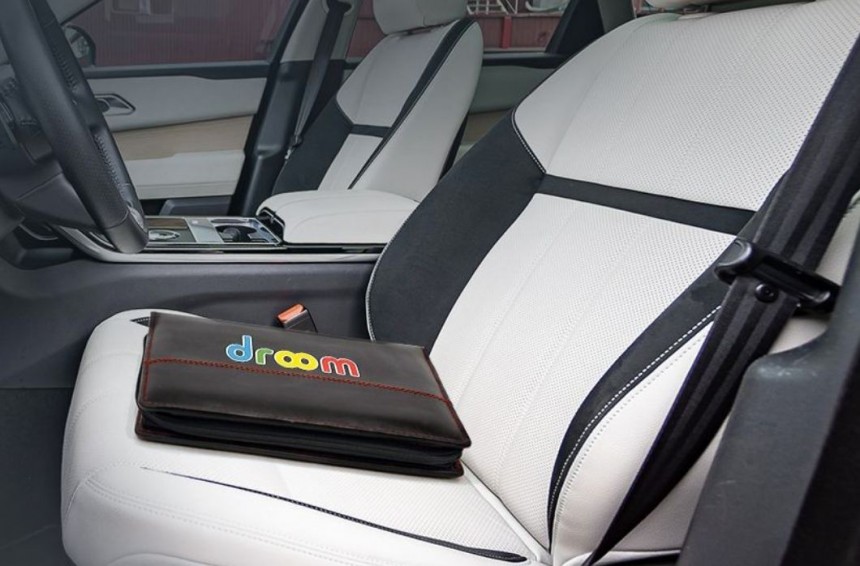
Paytm: Secure UPI Payments
 How to get the rent receipt from Paytm application?
How to get the rent receipt from Paytm application?
Have you ever struggled to obtain your rent receipt in order to claim HRA? You certainly must have. Many salaried employees must have encountered this situation at some point in their careers.
As a tax saver, it’s critical that you understand the proper way to claim HRA rebates because submitting forged documents can land you in more trouble than help. According to recent judicial decisions, your tax assessing officer has complete authority to verify the authenticity of the documents you submit for HRA claims.
In this blog, we will show you how to get a legitimate Paytm rent receipt and everything you need to know about rent receipt HRA, its benefits, and more.
How to Get Rent Receipt on the Paytm Application?Following are the step to pay and get a rent receipt on the Paytm application:
- Login to the Paytm app.
- Click on ‘Recharges & Bill Payments,’ then ‘Rent via Credit Card.’
- Choose what you want to pay for, such as house rent, society maintenance, office/shop rent, or broker fees.
- Enter the necessary details, such as the landlord’s account number and IFSC or mobile number or UPI ID
- Enter the required amount and then click on ‘Proceed.’
- To pay the rent, select any of the payment instrument available such as debit/credit card, UPI, Paytm Postpaid, and Paytm wallet.
- Your rent payment will be completed, and you will be able to download the rent receipt instantly from payment history section of rent payment.
A rent receipt is a document that records the tenant’s payment of rent to the landlord. The landlord issues it, and it can be used for legal or tax purposes.
A rent receipt includes important details such as the rent amount, date of payment, and transaction medium. This helps both parties keep physical records of the payments. It is a required document for resolving any rent payment disagreements. Furthermore, if you are eligible for an HRA tax exemption, you must keep your rent receipts.
Why do you need a Rent Receipt?
A rent receipt serves as physical proof that rent has been paid. It functions as a legal document that validates the transfer of funds from a tenant to a landlord. A rent receipt is also required to claim a House rent allowance (HRA). You must show your employer a rent receipt as proof of rent payment. Employers provide the HRA tax benefit after verifying rent receipts.
What are the Components of a Rent Receipt?A valid rent receipt has the following components:
- Tenant Name
- Landlord Name
- House Address
- Rent Paid
- Rental Period
- Signature of Landlord
- PAN of the landlord (if your annual rent exceeds Rs. 1,00,000)
- A valid rent agreement with your landlord is required. The rent agreement must include all relevant information, such as your monthly rent, the duration of the agreement, and a clause requiring payment of any utility bills.
- You must provide your landlord’s PAN if your rent payment exceeds Rs. 1 lakh in a calendar year.
- It is preferable to pay rent online rather than in cash. This allows you to keep track of the transactions more easily.
- If you live in a shared apartment, you must provide information on all tenants. It includes the number of tenants, the rent distribution ratio, and the distribution of utility bills.
- You must obtain a rent receipt each time you pay your rent. Rent receipts must be submitted to your employer.

Most companies include a House Rent Allowance (HRA) as part of their CTC (cost-to-company). It assists them in meeting the cost of living on their own if the company does not provide them with housing. HRA is not only a benefit; it is also a tax break. You must submit a rent receipt to your organization’s HR department to be eligible for HRA. Your employer may require you to do it quarterly, semi-annually, or annually rather than monthly. The HR team must confirm that you have paid your rent before you can claim an HRA tax exemption.
What is House Rent Allowance or HRA?HRA, or house rent allowance, is an important component of a salary slip. It is the amount paid by the employer as part of the employee’s salary. In other words, HRA is the amount paid by an employer to an employee to cover their housing expenses. HRA provides tax benefits to employees who pay for housing. The allowance varies according to salary and city of residence.
HRA provisions are governed by Section 10(13A) of the Income Tax Act of 1961. The primary benefit of HRA is that it reduces total taxable income. As a result, HRA reductions help to reduce the amount of tax that the taxpayer must pay.
HRA is included in the salary breakdowns of both public and private sector organisations. Various sections of the Income Tax Act aid salaried, self-employed, and professional individuals and professionals in reducing their rent expenditure.
HRA for Self-Employed ProfessionalsSelf-employed individuals can also claim deductions and HRA tax exemptions for House Rent Allowance (HRA). They are eligible for benefits under Section 80 GG. This Section can also be used by salaried employees to claim HRA tax exemptions when they do not receive HRA.
HRA Tax Exemption for the Salaried Employees
Section 10-13A of the Income Tax Act provides for HRA tax exemption. The deduction will be the lowest of the following:
- The House Rent Allowances provided by the employer.
- If an employee lives in any of India’s metro cities such as Delhi, Mumbai, Calcutta, and Chennai, he or she is eligible for HRA tax exemption on 50% of his or her salary
- The actual monthly rent paid by the employee for his or her residence, less than 10% of his or her salary.
- If the employee lives in another city, HRA can be deducted from 40% of the salary.
HRA claims are subject to the following rules:
- HRA cannot exceed 50% of your basic salary.
- The entire amount cannot be claimed because the exemption is based on the least of the following:
- Actual rent paid is less than 10% of the basic salary.
- HRA received directly from the employer.
- 50% of the basic salary if the taxpayer resides in a metropolitan area.
- You may be eligible for HRA benefits if you have a home loan.
- If the rent exceeds Rs. 1,00,000, the landlord’s PAN number must be provided along with the HRA claim form.
- You can receive HRA benefits if you live in your own home and pay rent to your parents. In the same situation, you cannot pay your spouse’s rent and claim HRA.
- You can deduct and declare 30% tax from the rent if the landlord is an NRI.
This means that the HRA tax exemption is only available if the following conditions are met:
- Total HRA received
- Actual rent paid less 10% of salary
- 50% of the basic salary if the taxpayer resides in a metropolitan area
- 40% of the basic salary if the taxpayer lives in a non-metropolitan area
Following are the conditions that must be met before filing the HRA exemption:
- The HRA exemption under Section 80, or any other section, is only available to an employee when he or she pays the landlord’s rent. There is no exemption for unpaid rent.
- The HRA tax is calculated on a monthly basis when there is a change in job location (i.e. a shift from metro to non-metro cities or vice versa) or salary. As a result, the deductions or HRA tax exemptions vary for each change period separately.
- If the rent is paid to anyone other than the employee’s father, HRA and tax exemptions are provided. To claim the deductions, rent should be paid on a monthly basis and only through bank transfers. This will make it easier for the IT department to calculate the cost.

- Only HUFs and individuals are eligible for house rent exemptions.
- Rent-related deductions can be claimed by both self-employed and salaried employees if they do not qualify for any tax exemptions under Section 10-13A.
- Those seeking Section 80 GG tax exemptions should not claim any tax benefits for a self-occupied property they own elsewhere.
- Those wishing to claim deductions under Section 80 GG should be able to do so by completing Form 10-BA. The individual must fill out the form and demonstrate that they meet all requirements.
the employee must provide the following documents to claim HRA:
If the employee pays more than Rs 1 lakh in rent during the fiscal year, he or she must provide the PAN card details and a copy of the owner/landlord’s PAN details
- Date
- Landlord’s name
- Tenant’s name
- Revenue stamp with the landlord’s signature
- Landlord’s PAN card details
- Address of the accommodation
- Duration of the stay
- Photocopy of the rental agreement (if required)
The HRA can be calculated using the following variables:
- Salary
- Salary plus HRA
- Rent was paid
- The address of your rented home

HRA is an important component of a person’s salary. It is the total amount paid by employers to employees for lodging. The HRA contribution is tax deductible. As a result, calculating HRA becomes critical.
HRA is calculated using several factors, including the city of residence, rent paid, and actual HRA received.
- Actual HRA paid by the employer
- 50% of salary in a metropolis and 40% of salary (Basic + DA) in a non-metropolis. Delhi, Mumbai, Chennai, and Kolkata are considered metro cities in India.
- Rent exceeding 10% of salary (Basic + DA)
Let’s look at an example to better understand the deduction.
Mr Ved’s monthly base salary is Rs. 1,000,000. The salary allowance is Rs. 90,000, and the HRA is Rs. 30,000. He pays a monthly rent of Rs. 25,000 for his Gurgaon rented home. His income tax deduction for HRA will be the least of the following:
- Actual HRA paid
- 40% of salary (Basic + DA), since Gurgaon is a non-metro city
- Rent paid in excess of 10% of salary (Basic + DA)
Salary = base salary + DA = (100000+90000) * 12 = Rs. 22,80,000
HRA paid monthly at Rs. 30,000 or Rs. 3,60,000 per year
The monthly rent is Rs. 25,000, or Rs. 3,00,000 per year.
The amount that Mr Ved can deduct will be the least of the following scenarios:
Mr Ved’s deduction amount will be the smallest of the following scenarios:
The actual HRA payment is Rs. 3,60,000.
Because Gurgaon is a non-metro city, 40% of Rs. 22,80,000 is Rs. 9,12,000, and the salary is Rs. 2,28,000.
Rent paid – 10% salary = Rs. 3,00,000 – Rs. 2,28,000 = Rs. 72,000.
The smallest amount is Rs. 72,000. As a result, Mr Ved is eligible for a tax deduction of Rs. 72,000.
What is the Last Date to file ITR and claim HRA Exemption?
The deadline for filing and submitting ITR (Income Tax Returns) for all salaried individuals who want to claim HRA tax exemptions, among other benefits, is July 31st of each fiscal year.
The deadline for self-employed individuals is;
- July 31, when they do not need an audit of their income.
- September 30, when the income audit is required.





